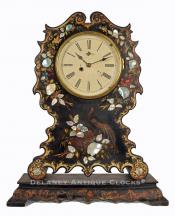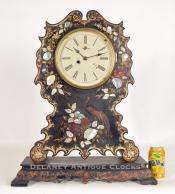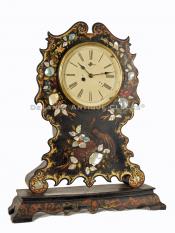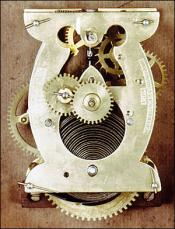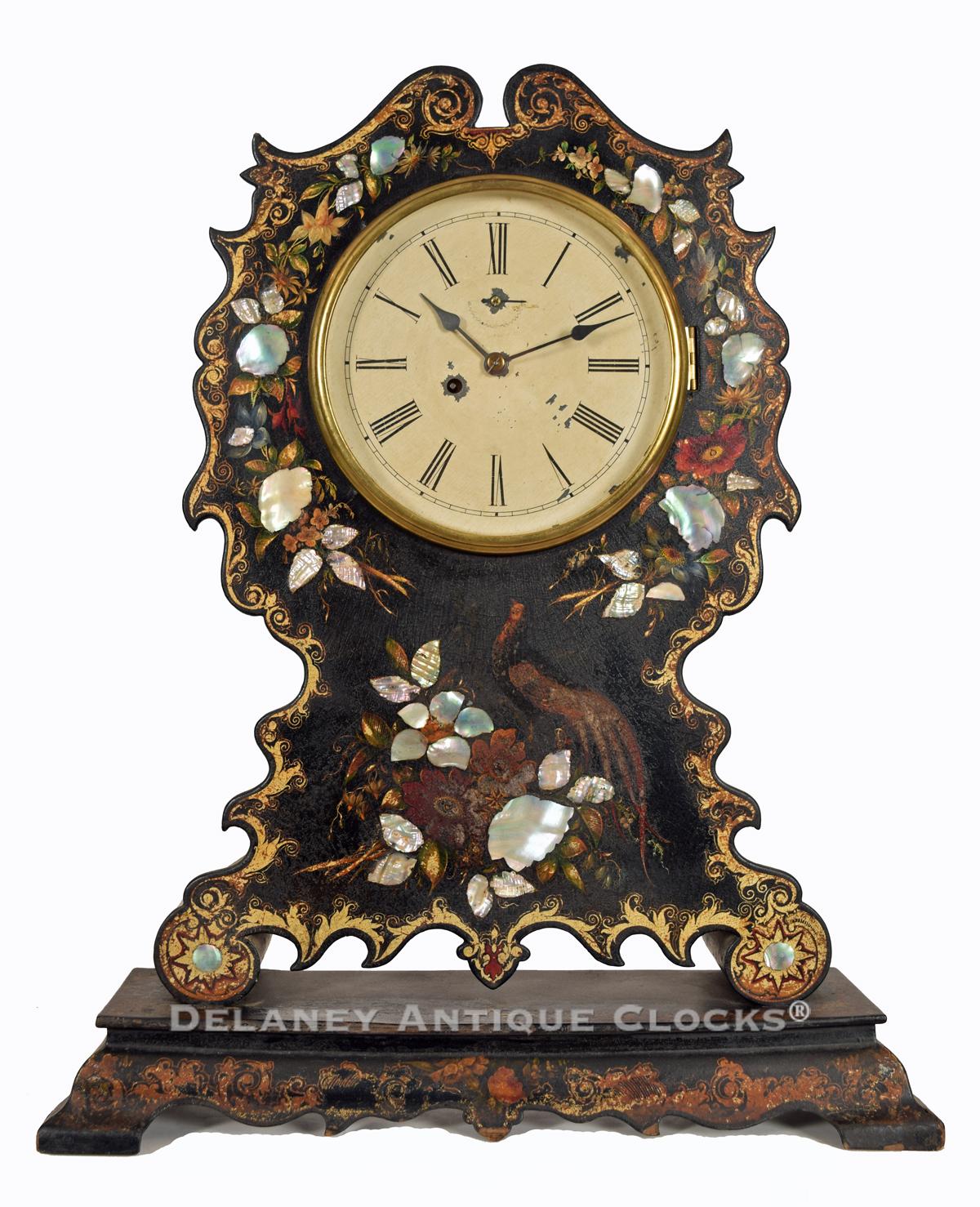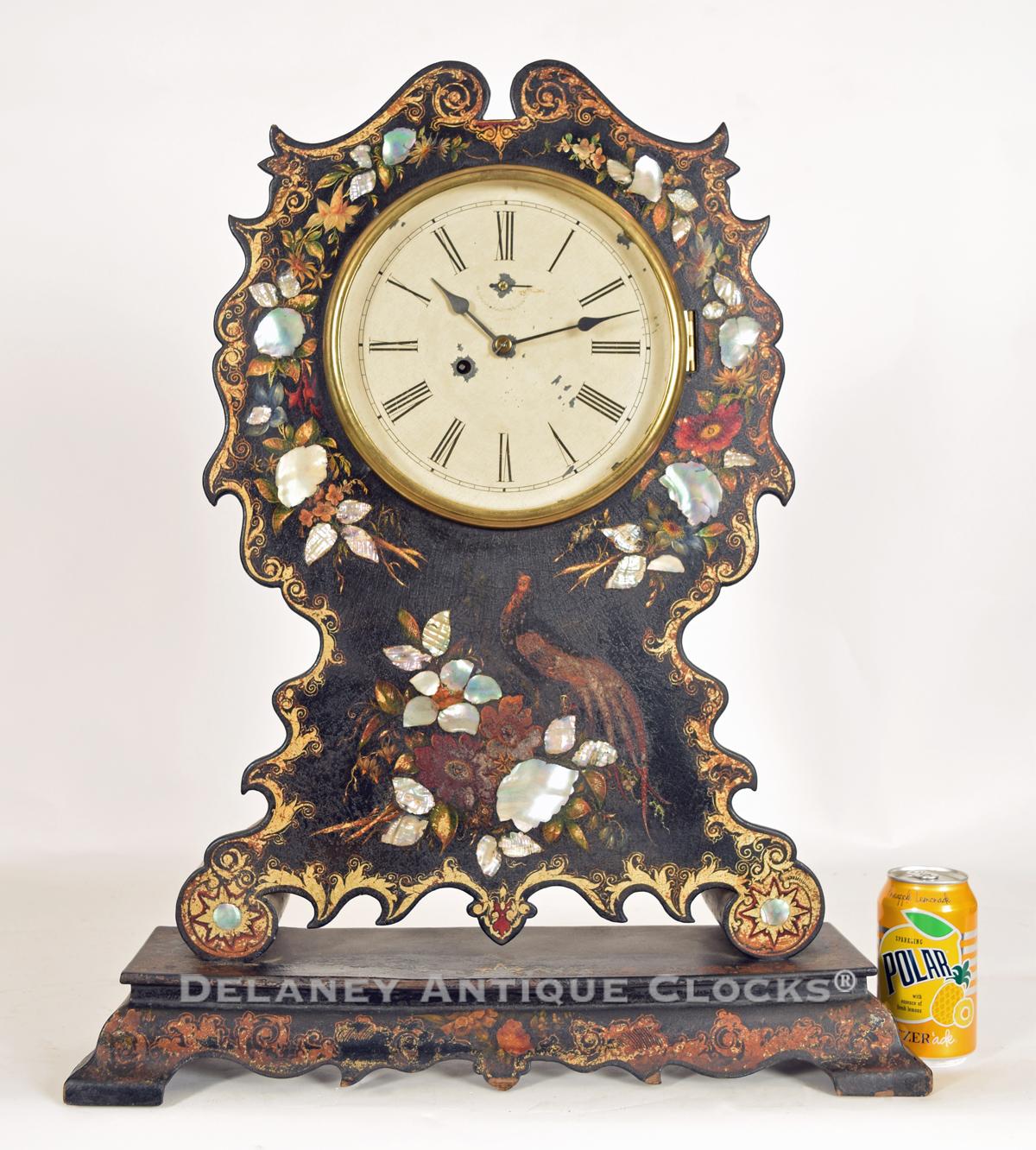Litchfield Mfg. Company. An oversized and decorated papier-mâché case. MM-166.
The Litchfield Mfg Company made this very unusual clock in Litchfield, Connecticut. The papier-mâché case is made from paper rosin, flour, and glue. The sheets are then laminated, forming a paperboard. In addition to clock cases, this product was also used to manufacture tables, fire screens, small boxes, and vases.
This fine example retains a very high percentage of its original decoration. This includes the mother of pearl inlays, gilt-painted designs, and painted florals. The case is also decorated with a large painted bird, perhaps a peacock. This decoration is in good original condition. Much of the gilt design trims the edges of the case. The painted details are somewhat subdued. An additional element is the molded base the clock case is mounted on. This platform is decorated similarly.
The painted zinc dial measures 8 inches in diameter and is protected by glass. The glass is fitted into a brass bezel hinged on the right. This dial is original to this clock and features a time ring formatted with Roman-style hour numerals. An adjustment for the speed of the movement is located below the numeral “XII.”
The movement construction is heavier than the average Connecticut grade. The plates and gearing are brass, and the pinions are steel. The front plate is die-stamped by the manufacturer. The works are spring powered and feature a single-time-only train. It is an eight-day “marine” design. The escapement is regulated by an oscillating balance wheel, much like a watch of this period. This clock does not use a pendulum. Samuel Botsford designed this version.
This large papier-mâché case is 26.5 inches tall and 21 inches wide and was made circa 1851.
This superb example is in excellent original condition.
Inventory number MM-166.
The Litchfield Manufacturing Company was founded in 1850 by Dr. Josiah G. Beckwith. He was a local physician and druggist who operated a medical practice and pharmacy on South Street in the building currently occupied by the Post Office. After founding the Litchfield Manufacturing Company, Dr. Beckwith acquired the property on South Street along the Bantam River. A decade earlier, this property had been used by Wadsworth, Lounsbury, and Turner and later by Julius Peck & Co. to manufacture shelf clocks. When Dr. Beckwith acquired the building, it measured 80 feet by 50 feet and was three stories high. In 1851, the Litchfield Manufacturing Company was incorporated, and several investors, including circus owner P.T. Barnum, joined the Board of Directors. The Company manufactured papier-mache goods such as small tables, card cases, fire screens, portfolios, small boxes, vases, and clock cases. Papier mache products were popular in Europe. To ensure the highest quality, Dr. Beckwith brought in skilled papier-mache workers from England and Germany. These artisans not only brought their unique techniques but also trained local men and women, leaving a lasting international influence on our town's industrial history. At its peak, the factory employed over 50 people. However, the success of the Company was short-lived. In 1854, P.T. Barnum persuaded the board to move the factory to East Bridgeport. A year later, due to financial difficulties, the factory closed.

